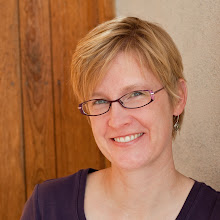We talked a lot about value in the Color Gradation Techniques class I taught last week in Golden, Colorado. This flower was on the porch of the shop and one of the students pointed out what a lovely color gradation it represented. I am pretty sure I couldn't create this with the colors on my shelf, but I think dyeing them might be an upcoming challenge.
I enjoy teaching classes more and more. Either that or this group of people was just extra special. Or maybe every group is extra special. I'm not sure. We had a small class and they were really interested in exploring color gradation ideas and creating effects with the techniques. (Ha! That is probably why I enjoyed it so much--they were listening!)
When I start seeing things like the photos below, I know we're in for a good time (or that Judy is as
Here are a few more photos from the workshop.
And here is a photo of a transparency that Judy did. Her idea came from Josef Albers' book, Interaction of Color. She added a purple to blue gradation on the edges. The bars in the center get lighter, but the red and the edges of the gray bars don't change even though they appear to. Also note the double color gradation in the Greek Key design: greyscale while the background is moving blue to purple.
It is mostly about the value, though being able to tell orange from green is also helpful.
From some of the lovely yarn shelves at the Recycled Lamb...













My most enjoyable and memorable class on color was with a class of third graders. I discussed the simple basics of color-which they had studied already. I explained how color in weaving is different, because our eyes perceive a blend of colors. We ended by taking a little walk and looking at colors around the neighborhood. One small little boy got so excited. "I see a purple leaf." I asked him to point to it and show me. He smiled," Oh, I know that there really isn't a purple leaf. It is a red leaf. With the blue sky behind, it makes me see purple." Lesson learned by one small little boy.
ReplyDelete